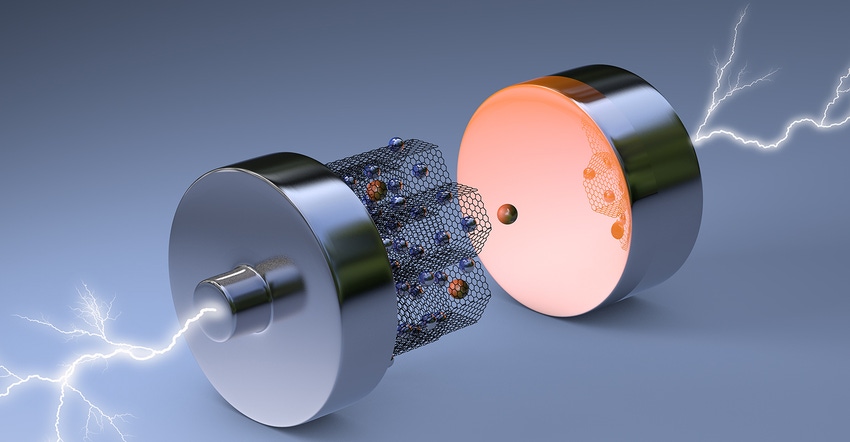Using Magnets to Create More Powerful EV Batteries
Researchers have fabricated an electrode with a ‘fast-lane’ alignment that improves charging speed, range.
October 5, 2022

Researchers have found a unique way potentially to facilitate twice the current range on just one charge for an electric vehicle (EV) battery by using magnets to help avoid some common issues with currently used lithium-ion batteries.
A team from The University of Texas at Austin have fabricated a new type of electrode for lithium-ion batteries: It's thicker, thanks to commercially available magnets, which researchers said were used to create an alignment that's optimal for ions to travel through the electrode.
The alignment—which is created during the fabrication process—is necessary to achieve performance gains, such as the ability to generate more power and faster charging, researchers said.
Typically, thicker electrodes force the ions to travel longer distances to move through the battery, which leads to slower charging time. One of the reasons for this is the typical horizontal alignment of the layers of material that comprise the electrode, which forces the ions to snake back and forth, researchers said.
A Fast Lane
Researchers created a faster path for lithium ions in their electrode, which is comprised of thin, two-dimensional (2D) materials that are stacked to create thickness. They then use a magnetic field to manipulate the orientations of the materials vertically, which creates a “fast lane” for ions to travel through the electrode.
2D materials are well-suited to create this new type of electrode for high-rate energy storage because they need only be several nanometers thick for rapid charge transport, said Guihua Yu, a professor in UT Austin’s Walker Department of Mechanical Engineering and Texas Materials Institute, who led the project.
“However, for thick-electrode-design-based next-generation, high-energy batteries, the restacking of nanosheets as building blocks can cause significant bottlenecks in charge transport, leading to difficulty in achieving both high energy and fast charging," he acknowledged.
That is where the unique vertical architecture of the electrode comes into play, leading to an electrode that "shows superior electrochemical performance," Zhengyu Ju, a graduate student in Yu's research group, said in a press statement. High mechanical strength and high electrical conductivity also help facilitate performance gains, he said.
Proving the Concept
Researchers tested the electrode against not only a commercial electrode, but also fabricated a horizontally arranged electrode using the same materials for experimental control purposes.
In tests, they found that their vertically arranged electrode could potentially facilitate twice the range on a single charge for an electric vehicle compared with a battery using an existing commercial electrode. Moreover, they were able to recharge the vertical thick electrode to 50 percent energy level in 30 minutes, compared with two hours and 30 minutes with the horizontal electrode, they said.
Researchers published a paper on their work in the journal Proceedings of the National Academy of Sciences.
The work is in its early days, with much more to explore and expand on in this type of electrode research for EV battery performance gains, researchers said.
The goal of the work is to generalize the vertical organization of electrode layers and to then to apply it to different types of electrodes made with other materials, they said. Researchers hope that the industry as a whole will adopt this method to create future EV batteries that are both fast-charging and high-energy.
Elizabeth Montalbano is a freelance writer, journalist and therapeutic writing mentor with more than 25 years of professional experience. Her areas of expertise include technology, business and culture. Elizabeth previously lived and worked as a full-time journalist in Phoenix, San Francisco and New York City; she currently resides in a village on the southwest coast of Portugal.
About the Author(s)
You May Also Like





